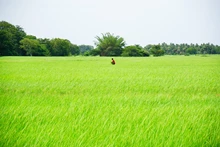
Weeping willows, also known as Salix Babylonica, are fast-growing trees that are susceptible to various diseases. This article highlights five common diseases that affect these trees, including crown gall, blight, powdery mildew, black canker, and scab. The article provides useful tips on how to prevent and treat each disease, such as pruning, maintaining proper ventilation and moisture levels, and using fungicides. By following these tips, gardeners can help their weeping willows stay healthy and thrive.
Crown Gall- Crown gall is a common disease that affects willow trees. It is caused by the bacteria Agrobacterium Tumefaciens, which enters the plant through wounds and causes gall-like tumors on the tree’s bark or roots. You can identify this disease by looking for irregular, rough-textured growths that resemble tumors on the branches and where the trunk meets the soil.
When left unchecked, this disease can interfere with water and nutrient uptake in the tree and the infection can spread to other parts of the tree. Gardeners can prevent crown gall by using clean tools when pruning the tree, avoiding overfertilization, avoiding overwatering, planting trees in well-ventilated areas, and not overcrowding the tree. This disease is treated by quickly removing the infected parts of the tree and applying copper-based fungicide to slow the progression of the disease.
Blight- Blight is a fungal disease. Its symptoms include spots and lesions on the leaves, premature falling of leaves, defoliation, twig, and/or branch dieback. This disease is prevented by not overwatering and fertilizing the plant too frequently, ensuring adequate airflow, regularly inspecting trees for signs of damage, and regularly removing fallen branches and leaves from under the tree.
This plant needs to be treated by a professional. Treatment usually includes pruning infected portions of the tree and burning them and regular specially timed fungicide application. Severely infected and untreated trees, may not survive. However, the disease can be brought under control with proper supportive care and fungicidal treatment.
Powdery Mildew- Powdery mildew in willow trees can be caused by two separate fungi: Erysiphe adunca and Phyullactinia guttata. This disease leads to a presence of a film of fuzzy or powdery substance on the leaves. As the disease progresses, brown tiny spores start forming on the fruits and flowers.
This disease is prevented by pruning regularly to improve the ventilation of air space between branches and to reduce humidity. Avoiding overhead watering can also prevent this disease. Treatment includes cutting off infected areas, treating the infected areas with a fungicide, and avoiding fertilization.
Black Canker- Black canker is a willow disease caused by a fungus known as Glomerella miyabeana. This disease causes lesions to form on the leaves, which eventually leads to defoliation and spread to twigs causing cankers to form on twigs and branches. Black canker can be prevented by avoiding overhead watering, removing all fallen debris from the tree, and not adding debris from infected plants to the compost pile.
Black canker can kill a willow tree that is young and under a great deal of stress. Treatment of black canker includes pruning infected areas and sterilizing the tools use for clipping after use, avoiding stressing the tree by keeping the moisture levels constant, and by providing supportive care, such as routine watering and providing adequate airflow.
Scab- Scab is a fungal disease caused by a fungus known as Venturia saliciperda. This fungus remains dormant throughout winter and only starts to spread as the temperatures rise. Symptoms of this disease include the appearance of brown and black spots and lesions on new leaves, along with premature withering and falling of leaves.
Scab can be prevented by regularly watering the plant, routine fertilization, and proper airflow. Regular inspection of the tree during prolonged monsoons can also help prevent this disease. Treatment generally requires the application of fungicide after removing the infected area.










